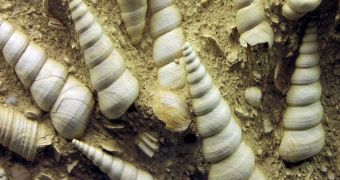A group of researchers from the University of Wisconsin-Madison (UWM) says that the chemical composition of the early ocean was extremely important for the development of marine life later on.
The scientists explain that the vast amount of biodiversity currently present in the water was a direct result of favorable chemical conditions in the water. Exception were of course the few extinction events that affected the seas as well.
However, after each such event, conditions were restored back to normal, and life thrived once more. This type of interaction has been going on for the better part of the last 500 million years or so.
During the course of their latest study, the investigators were also able to determine that the Earth's fossil record is extremely useful in supplying valuable, precise data of the way past environments looked and behaved like.
Scientists have been questioning the reliability and exact uses of the fossil record since the time of Charles Darwin, and the new research brings additional clarifications to this ongoing discussion.
Even Darwin “looked at the fossil record and tried to understand what it tells us about the history of life,” explains UWM geoscientist, Shanan Peters. He was the leader of the new study, which demonstrates the exact usefulness of the fossil record.
Together with Bjarte Hannisad, an investigator at the University of Bergen, in Norway, the scientist published details of his study in the latest issue of the top journal Science. The main conclusion is that ocean chemistry and sea-level fluctuations both influenced biodiversity extensively.
“These results tell us that the number of species in the oceans through time has been influenced by the amount and availability of carbon, oxygen and sulfur, and by sea level,” Lisa Boush explains.
“The study allows us to better understand how modern changes in the environment might affect biodiversity today – and in the future,” says the expert, who is a program director with the US National Science Foundation (NSF) Division of Earth Sciences (DES).
In order to understand the way past environments interacted, scientists covered a large database of records, including those related to ancient global climates, tectonic movements, continental flooding and changes in biogeochemistry. An emphasis was placed on oxygen, carbon and sulfur cycle variations.
“We find an interesting web of connections between these different systems, which combine to drive what we see in the fossil record,” Peters concludes.

 14 DAY TRIAL //
14 DAY TRIAL //